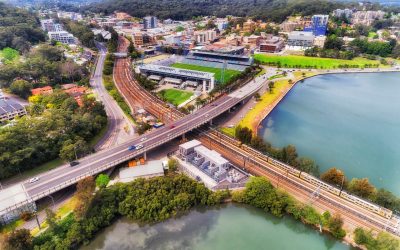Categories
Landmark report highlights strengths and opportunities for the Central Coast
17-03-22
Regional Development Australia Central Coast (RDACC) has partnered with Infrastructure Australia to develop the Regional Strengths and Infrastructure Gaps report, which highlights opportunities in healthcare, manufacturing and tourism, to support the regionalisation trend that took hold during the pandemic and is reshaping the Central Coast region.
Consultation facilitated by RDACC also found that stakeholders on the Central Coast consider the most significant infrastructure gaps to be:
• Access to further education and skills training.
• Capacity, connectivity and quality of public transport.
• Availability, affordability and diversity of housing.
RDACC Chair, Lawrie McKinna, says that leveraging our region’s strengths and addressing our identified gaps is vital for the future prosperity of the Central Coast.
“In recent times, government investment in healthcare research and training facilities on the Central Coast has created major opportunities in employment, education and healthcare services,” says Mr McKinna.
“With a strong manufacturing sector contributing $300M to our local economy and a $1.2B local tourism industry, we need to do everything we can to support and foster growth in these areas to make us a more resilient region.
“Similarly, we need our federal and state governments to stand up and address the gaps identified in education, public transport and housing to improve the quality of life for all Central Coast residents.”
RDACC CEO and Director Regional Development, John Mouland, says RDACC appreciated the opportunity to play a pivotal role in gathering this significant regional data and what matters now is how this information is acted on. [Type here]
“As the leading driver of economic development on the Central Coast, we are pleased that RDACC has been recognised for its role in bringing this report to life,” says Mr Mouland.
“Our position as a conduit between all levels of government and key regional stakeholders enabled us to facilitiate the discussions needed and gather the information required to accurately identify this regional data.
“What’s important now is what is done with this information – we are calling on all levels of government to address these findings and to work collaboratively with all regional stakeholders to help make our region the best it can be.”
In developing this Report, Infrastructure Australia partnered with 48 Regional Development Australia committees to conduct extensive consultation on community views.
This was supported by engagement with key regional stakeholders, including businesses, peak bodies and industry groups, to help create a picture of each area’s diverse assets, growth industries and infrastructure requirements.
The Report provides a lens to highlight the opportunities in our regions and prioritise investment in regional Australia. With its release, Infrastructure Australia aims to increase the focus on the needs of regional Australia through building an evidence base of mutually acknowledged needs, as well as identifying the assets available to be leveraged by industry and the community, working alongside government, to provide solutions.
Published alongside an interactive map, the report is a starting point for discussion between all parties to inform further planning, policy and investment solutions. Further consultation is being encouraged, with submissions open until 29 April 2022.

